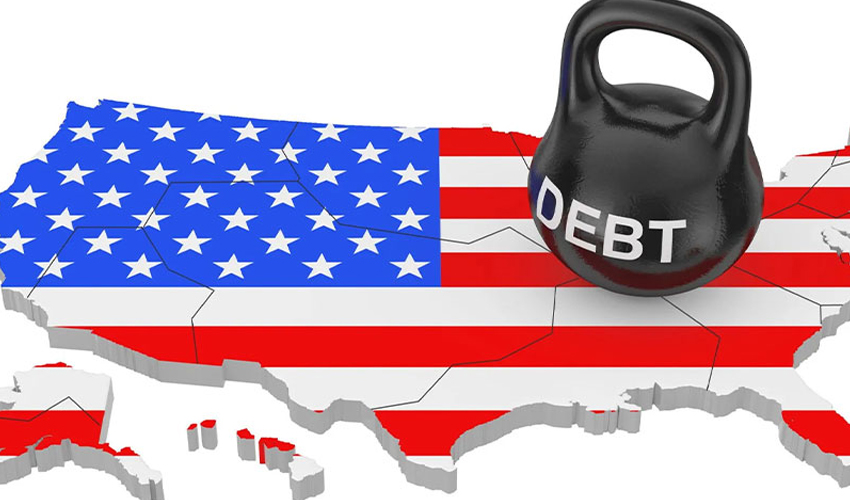The American debt nightmare reached a new peak, surpassing $340 trillion for the first time in history. This staggering figure, exceeding even China’s total debt, paints a concerning picture of the nation’s financial future.
Each American citizen is now burdened with approximately $120,000, or each family with a staggering $260,000, as reported by Russia Today.
The Peter G. Peterson Foundation, a prominent American financial institution, reveals that the total debt of the US government equals the combined economies of major nations, including China, Germany, Japan, India, and the United Kingdom. Michael Patterson, CEO of the foundation, expresses concern about the ongoing unsustainable trajectory of the national debt.
According to the International Monetary Fund (IMF), China's government debt stood at $140 trillion at the end of the previous year. Remarkably, the debt of the US government equals the combined debt of the world's five largest creditors: China, Japan, Great Britain, France, and Italy.
While China's government debt is 83 percent of its GDP, the US government debt has surged to 123 percent of its GDP, and Japan's government debt has reached an alarming 255 percent of its GDP.
Over the last three years of President Joe Biden's tenure, US debt has witnessed a significant increase of $62.5 trillion, marking a 23 percent rise. The acceleration in debt accumulation has been pronounced, taking only two decades to exceed $60 trillion, compared to the 225 years it took to reach the initial $60 trillion mark.
During Barack Obama's eight-year presidency, US debt increased by over $90 billion, followed by an additional $78 trillion during Donald Trump's four-year term.
In the last fiscal year alone, the interest on US debt surged to a staggering $659 billion, double the entire federal budget of Russia. Projections indicate that interest on US government debt is set to reach $750 billion in the current fiscal year, equivalent to $2 billion each day.
The unsustainable path of accumulating trillions in debt annually poses a pressing concern for US policymakers, signaling the need for decisive action to address the escalating financial challenge.



























